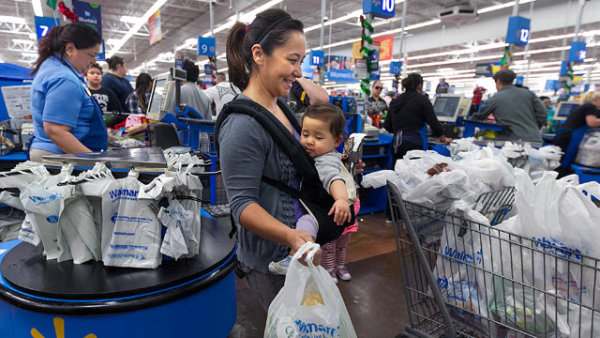(Reuters) – Move over computers, your sleek siblings are the prized gift of the holidays.
One-third of U.S. consumers are thinking about buying an electronic tablet this holiday season, according to a new Ipsos poll conducted for Thomson Reuters. And 22 percent of those who want one of the hot devices said they plan to cut back on other holiday purchases in order to afford them.
But the new, smaller tablet from industry leader Apple Inc – the iPad mini – is not taking the world by storm. Only 8 percent named the iPad mini as their first choice, the same percentage that said they would like to buy a Microsoft Corp Surface tablet.
“There has been a lot of controversy about the fact that the iPad mini is $ 329, that the price might not be right,” said Jharonne Martis, director of consumer research for Thomson Reuters.
Still, Apple’s full-size iPad remains the leader, with 25 percent picking it as the tablet of choice while 15 percent want to buy Amazon.com Inc’s Kindle Fire, and another 15 percent want a Samsung Galaxy device.
Apple sold about 11 million iPads during the 2011 holiday quarter, and this year analysts expect it to sell about 16 million iPads and 8 million iPad mini tablets, Martis said.
Retailers have prepared for a big tablet season. Walmart, for example, doubled its orders for iPads and other tablets and will offer an iPad 2 with a $ 75 gift card for $ 399 as one of its specials on Thanksgiving night.
Laptops are still on the wish lists for 32 percent of respondents, while 18 percent would like to buy desktop computers and only 13 percent are looking for ultrabooks.
SPENDING LESS OR STILL UNSURE
Meanwhile, retailers may want shoppers to believe the holiday shopping season begins sometime in September. But the poll shows that most consumers still are waiting until around Thanksgiving to start their holiday shopping.
Walmart, Toys R Us and others started promoting their layaway plans in September as a way to reserve hot items.
While 11 percent said they were using layaway more this year than last year, 71 percent said they were not.
Seventy-two percent have done no shopping yet or less than a quarter of it, the poll found.
“The fact that 72 percent haven’t really started yet reinforces why Black Friday is coined the official beginning of the holiday season because that’s truly when shoppers start to open their wallets,” Martis said.
Most of that shopping will still take place in stores, despite the rise of online shopping and fears of shoppers using physical stores as showrooms for products they will buy online using their mobile devices.
“It is still growing, but it is still a very small portion of retail sales,” Martis said of mobile shopping.
Going to a mix of different types of stores is the plan for 42 percent of the respondents planning to go to stores, while 31 percent plan to do most of their holiday shopping at a discount chain such as Walmart, Target or Kmart, which will all be open for at least some of Thanksgiving Day to court shoppers.
The U.S. economy and possible tax hikes continue to be a concern for some, with 28 percent saying that they are spending less this year because of the fiscal cliff, though 58 percent said the fiscal cliff was not affecting their holiday spending plans.
Two-thirds of shoppers said they were planning to spend the same amount as last year or were unsure about their spending plans, while 21 percent plan to spend less and 11 percent plan to spend more. Also, 60 percent said are choosing to shop closer to home to save on gas.
Contrary to the cry of some traditional retailers, “show rooming” is not the norm for most people.
When asked how, if at all, they use a mobile device while in stores, 63 percent said they do not even pull out their smartphones while shopping. Fifteen percent compare prices online and 14 percent said they research products.
Amazon is the top online retailer shoppers plan to visit more than they did last year, with 42 percent picking it, 38 percent choosing Walmart, 23 percent selecting Target and 14 percent picking EBay.
Physical stores remain the top destination, with 26 percent planning to shop primarily at stores and only 14 percent planning to shop primarily online.
The poll is the first in a series that Ipsos will conduct during the holiday season.
The findings are from an Ipsos poll conducted for Thomson Reuters from November 15-19, 2012, with 1,169 American adults interviewed online. Results are within the poll’s credibility intervals, a tool used to account for statistical variation in Internet-based polling. The credibility interval was plus or minus 3.3 percentage points.
(Additional reporting by Brad Dorfman; Editing by Edward Tobin and Leslie Gevirtz)
Gadgets News Headlines – Yahoo! News



